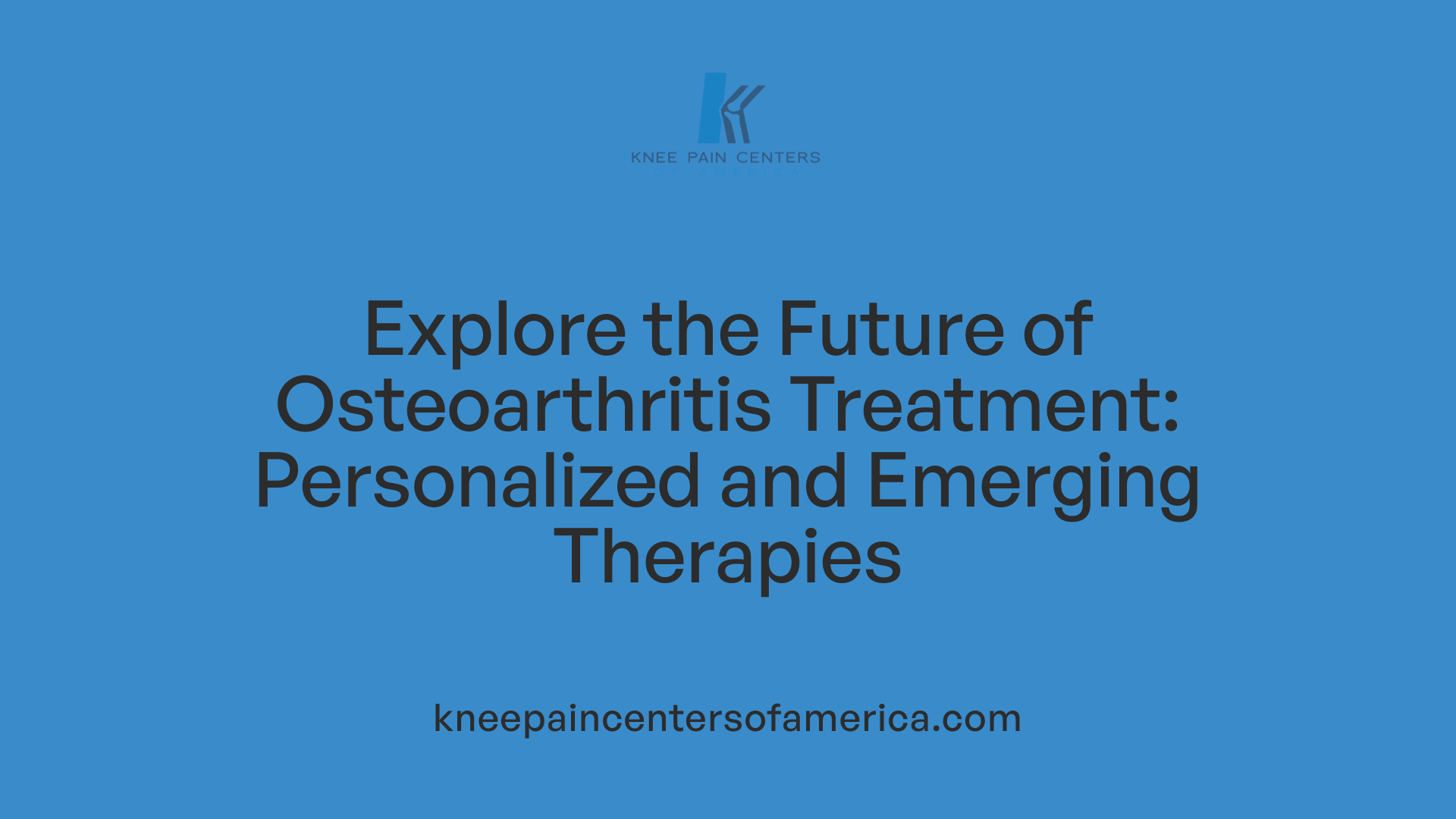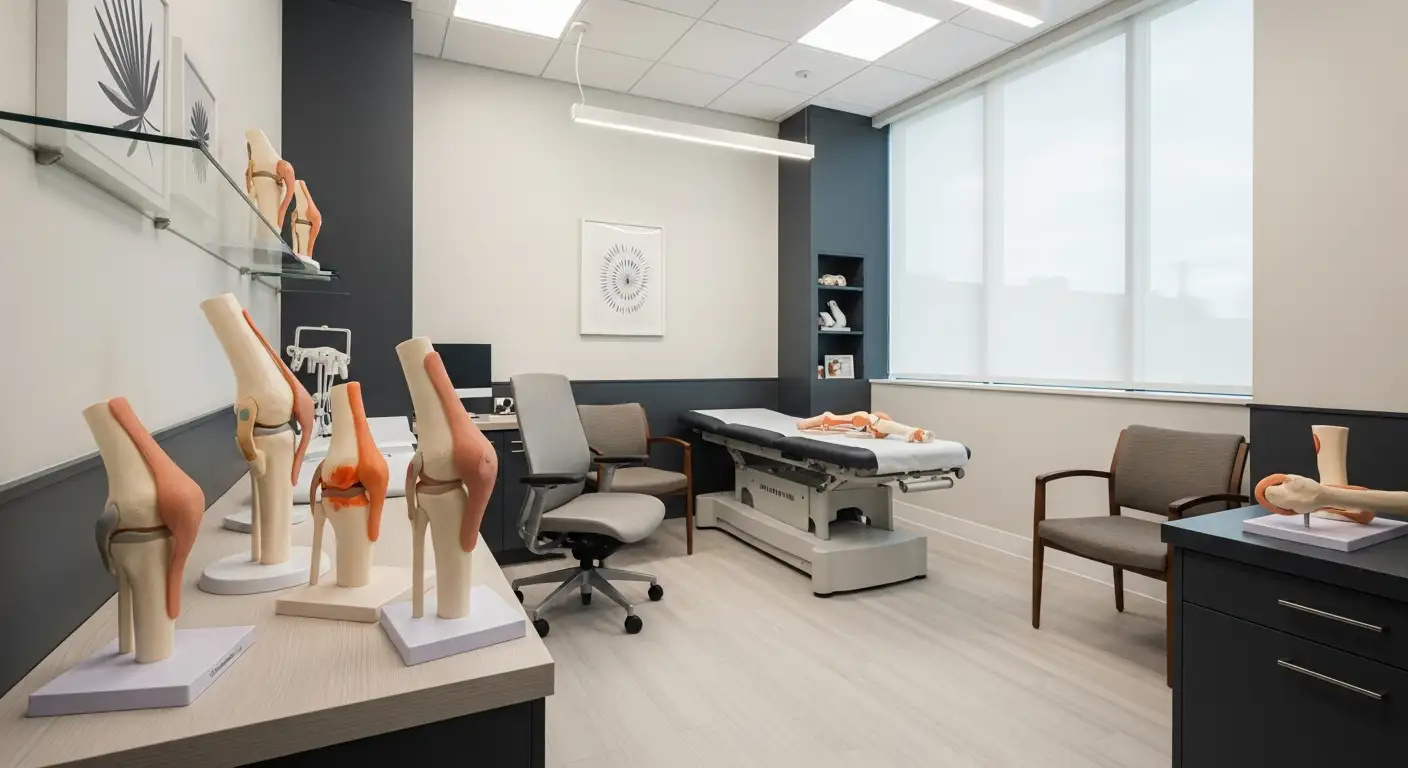Understanding the Importance of a Second Opinion
Knee osteoarthritis affects millions, causing pain, inflammation, and reduced mobility. Treatment options range from conservative management to advanced surgical procedures. Deciding on the right path can be challenging, especially with the advent of new therapies. Seeking a second medical opinion ensures patients receive the most accurate diagnosis and personalized treatment plan, avoiding unnecessary procedures and potentially uncovering innovative solutions.
Why a Second Opinion Matters Before Committing to Knee Osteoarthritis Treatments

Why is seeking a second opinion important before invasive knee osteoarthritis treatments?
Obtaining a second opinion is crucial when facing invasive treatments like knee replacement for osteoarthritis. It confirms the diagnosis and ensures the recommended treatment plan is appropriate and necessary. This step helps prevent unnecessary or overly aggressive surgeries that might result from misdiagnosis or incomplete evaluation.
Orthopedic specialists play a vital role in this process. Experts like Dr. Mitchell Klement thoroughly review imaging studies, symptoms, and previous diagnoses to determine the best treatment approach. Their specialized knowledge often leads to revised diagnoses or alternative treatment options, creating safer and more effective care paths.
Studies reveal that second opinions change treatment plans in up to 40% of cases. Patients sometimes discover non-surgical alternatives or less invasive therapies, such as Genicular Artery Embolization (GAE), physical therapy, or injections, which can delay or eliminate the need for surgery.
Additionally, insurance providers frequently cover second opinions before major surgeries, including Medicare Part B, making these consultations accessible and helping patients make informed decisions without added financial burden.
Seeking a second opinion is a prudent step toward achieving better physical outcomes, avoiding risks, and feeling confident with the knee osteoarthritis treatment plan.
Exploring Non-Surgical Options Through a Second Opinion

How do non-surgical treatments help manage osteoarthritis-related knee pain?
Non-surgical treatments play a vital role in managing knee osteoarthritis by reducing inflammation, controlling pain, and improving joint function. Common approaches include over-the-counter and prescription medications such as NSAIDs (e.g., ibuprofen or Aleve) and corticosteroid injections. These injections can provide significant relief but are typically limited to a few times per year to avoid joint damage. Bracing and physical therapy, especially exercises focused first on range of motion and then on strengthening, also contribute to pain relief and mobility improvement. Lifestyle modifications like weight management and tailored exercise programs further support symptom control.
New minimally invasive procedures like Genicular Artery Embolization (GAE)
Exciting advancements in non-surgical treatments include Genicular Artery Embolization (GAE). GAE is an outpatient, minimally invasive procedure that targets the blood vessels fueling inflammation in the knee. It does not require general anesthesia, hospital stay, or stitches, allowing for a quick recovery. By reducing blood flow to the inflamed tissues, GAE effectively lowers pain and inflammation, preserving the natural knee joint. This treatment is especially attractive to patients who have not found relief through medications or injections and want to delay or avoid knee replacement surgery.
Use of medications, injections, and physical therapy
Medications, including both over-the-counter and prescription options, are foundational in pain management. Corticosteroid injections directly reduce inflammation but must be used judiciously. Physical therapy is crucial and focuses on improving range of motion before strengthening exercises. Many patients experience notable improvement in pain and stiffness within 4-6 weeks of consistent therapy. Additionally, non-surgical treatments like platelet-rich plasma (PRP) therapy and stem cell injections may be explored through a second opinion.
When to consider non-surgical options
Patients should consider non-surgical treatments when pain, swelling, or stiffness persist despite initial therapy. Non-invasive approaches are typically recommended before contemplating surgery. Seeking a second opinion is particularly beneficial if surgery is suggested based solely on imaging or if current treatments haven’t delivered sufficient relief. Exercising patience with conservative management can sometimes avoid or delay more invasive interventions.
How second opinions reveal alternative therapies
A second opinion allows patients to confirm the diagnosis and uncovers a wider range of treatment possibilities. Different specialists may recommend alternative therapies like GAE, enhanced physical therapy protocols, or novel injections, which the original provider may not have discussed. This can help patients avoid unnecessary surgery and choose treatments aligned with their goals and lifestyle. Ultimately, exploring non-surgical options through a second opinion leads to more informed decisions and better long-term outcomes.
When Surgery Becomes Necessary and the Role of Second Opinions

When is Surgery Recommended for Knee Osteoarthritis, and What Are the Common Surgical Options?
Surgery for knee osteoarthritis is typically considered when nonsurgical treatments—such as medications, physical therapy, and injections—fail to adequately reduce pain or improve function. It becomes especially relevant in cases of severe joint damage or significantly limited mobility that affect daily activities.
Common surgical procedures include:
- Osteotomy: This surgery realigns the bones to shift weight away from the damaged part of the knee, often delaying the need for joint replacement.
- Partial Knee Replacement: Targets damage in just one part of the knee, preserving healthy tissue.
- Total Knee Arthroplasty (TKA): This involves replacing the entire knee joint and is used for widespread arthritis.
Importance of Surgeon Experience and Implant Choice
Outcomes of knee surgeries strongly depend on the surgeon's skill, experience, and the choice of implant. High-volume, board-certified surgeons generally achieve better patient results and fewer complications. Implant selection tailored to the patient's anatomy and lifestyle can significantly influence long-term success.
Preoperative Preparation and Postoperative Recovery
Physical therapy plays a dual role, helping improve range of motion and strength before surgery, which can ease the recovery process. Following surgery, structured rehabilitation is vital for restoring function and minimizing stiffness.
How Second Opinions Assist in Surgical Decision-Making
Obtaining a second opinion is crucial before committing to surgery. It confirms the necessity of the procedure, clarifies treatment options, and can reveal less invasive alternatives. Patients also gain the opportunity to evaluate different surgeons’ experience and approaches, thereby optimizing their surgical outcomes. This practice is encouraged by medical professionals to ensure well-informed, personalized decision-making.
Emerging Therapies and Personalized Treatment Strategies Revealed Through Second Opinions

What are the latest medical treatments available for knee pain and osteoarthritis?
Recent advances in treating knee osteoarthritis go beyond traditional methods like physical therapy, NSAIDs, and corticosteroid injections. New minimally invasive procedures, such as genicular artery embolization (GAE), are gaining traction. GAE targets blood vessels feeding inflamed knee tissue to reduce pain and inflammation without surgery, offering a quick recovery in an outpatient setting.
Regenerative medicine is also reshaping treatment options. Platelet-rich plasma (PRP) and mesenchymal stem cell injections aim to harness the body's healing potential to relieve symptoms and possibly slow disease progression. Although promising, these therapies still require further research to confirm long-term effectiveness.
Additionally, gene therapy trials that focus on delivering anti-inflammatory agents like interleukin-1 receptor antagonist (IL-1Ra) directly into the joint show early encouraging results for pain reduction.
How do emerging treatments fit with traditional methods?
These new therapies are often used alongside established treatments, such as physical therapy and oral medications, creating a more comprehensive treatment plan. Patients may exhaust conservative options first and then consider innovative procedures like GAE or PRP if symptoms persist. This blended approach helps preserve the joint and may delay or avoid surgery.
Personalizing osteoarthritis care
Personalization of treatment is becoming increasingly important. Orthopedic specialists assess a patient’s symptoms, imaging results, lifestyle, and preferences to tailor therapies that best meet individual needs. A second opinion from a specialist familiar with cutting-edge treatments ensures patients explore all viable options, including non-surgical and emerging therapies.
Questions to ask regarding new treatments
When consulting about innovative options, patients should inquire about:
- The evidence supporting the treatment’s effectiveness and safety
- How the therapy compares to traditional options
- Potential risks and recovery time
- Eligibility criteria and expected outcomes
- Costs and insurance coverage
Benefits of consulting specialists familiar with innovative therapies
Specialists like those at USA Pain Center who are experienced in advanced, non-surgical treatments can provide expert guidance. They help clarify complex options, reduce unnecessary surgeries, and support patients in making well-informed decisions aligned with their goals and lifestyles.
| Aspect | Traditional Treatments | Emerging Therapies | Integration Benefits |
|---|---|---|---|
| Examples | NSAIDs, physical therapy, corticosteroids | GAE, PRP, stem cell injections, gene therapy | Combines symptom relief with joint preservation |
| Invasiveness | Non-invasive or minor injections | Minimally invasive outpatient procedures | Reduced recovery times and risks |
| Personalization | Based on symptoms and imaging | Tailored to biology and patient preference | Comprehensive, patient-centered care |
How to Prepare and What to Expect When Seeking a Second Opinion for Osteoarthritis

Steps to Find an Experienced Orthopedic Specialist
Begin your search by asking your primary care physician for referrals. Additionally, gather recommendations from family and friends or conduct online research focused on board-certified orthopedic surgeons known for high surgical volumes and positive patient reviews. This approach increases the chance of finding a highly skilled specialist.
Importance of Bringing Medical Records and Imaging
Bringing comprehensive medical records, including test results and imaging studies like X-rays or MRIs, ensures the consulting doctor fully understands your condition. This documentation aids in reviewing previous diagnoses and refining treatment plans, leading to more accurate assessments.
Key Questions to Ask During Consultation
Prepare questions covering the nature of your condition, treatment options (both surgical and non-surgical), risks involved, recovery expectations, and the surgeon’s experience with procedures such as total knee arthroplasty (TKA) or minimally invasive treatments like Genicular Artery Embolization (GAE). This helps clarify your treatment pathway.
How to Evaluate Differing Opinions
When opinions vary, consider your personal treatment goals, comfort with the suggested procedures, risks associated with delaying treatment, and potential benefits of non-invasive options. This evaluation ensures your decision aligns with your health needs and lifestyle preferences.
Insurance and Referral Considerations
Verify your insurance coverage for second opinions beforehand, as many plans, including Medicare Part B, cover these consultations. Having a referral from your current doctor may also be necessary, so plan accordingly to avoid coverage issues.
Emotional and Practical Benefits
Obtaining a second opinion can alleviate anxiety by confirming or offering alternative diagnoses and treatments. It empowers you to make informed decisions, potentially avoiding unnecessary surgeries, and helps build confidence in your chosen treatment path.
Complementing Medical Treatments with Lifestyle Changes
In addition to medical interventions, lifestyle modifications play a vital role. Maintaining a healthy weight reduces knee stress, while low-impact exercises like walking or yoga improve joint flexibility and strength. Protective measures such as supportive footwear and an anti-inflammatory diet further aid in managing symptoms and slowing osteoarthritis progression.
Making Informed Decisions With Confidence
Seeking a second opinion is a wise and proactive step for anyone facing knee osteoarthritis treatment decisions. It protects against misdiagnosis, uncovers non-surgical and cutting-edge options, and ensures that surgical interventions are truly necessary and performed by skilled surgeons. Combined with lifestyle adjustments and ongoing communication with healthcare providers, second opinions empower patients to tailor care uniquely suited to their needs and goals, ultimately improving outcomes and quality of life.
References
- When Would You Need a Second Opinion?
- How Getting a Second Opinion for Joint Pain Can Help
- When To Seek A Second Opinion For Knee Pain Treatment
- When Should You Get a Second Opinion on Knee Surgery?
- Should I Get a Second Opinion Before Joint Replacement ...
- Why Patients Should Get a Second Opinion About TKA
- A second opinion for knee pain relief
- 3 Reasons to Seek a Second Opinion from an Orthopedic Doctor
- When Do You Need a Surgical Second Opinion





